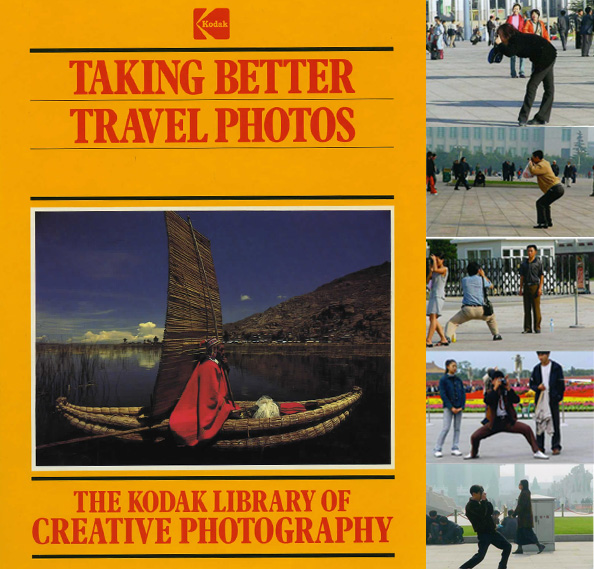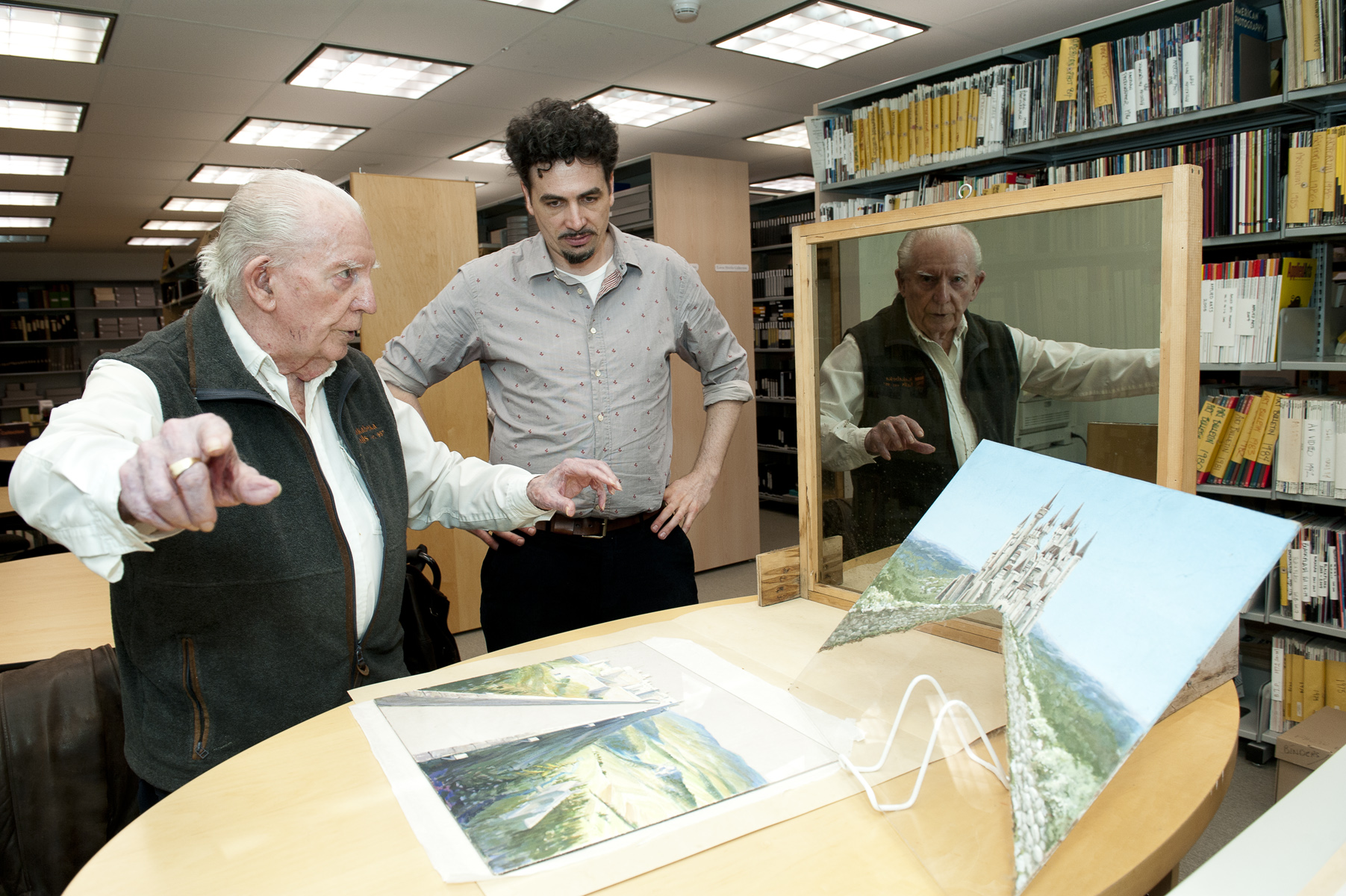
Toronto Metropolitan University students and researchers now have access to an extensive collection of materials related to Robert Hackborn’s work. For nearly four decades, Robert Hackborn worked at the CBC in the design and production of sets and visual effects for television shows. On display now at the Special Collections Library are some of these materials generously donated by Hackborn.
Robert Arthur Hackborn was born in 1928 in Toronto, and attended the Ontario College of Art (OCA) from 1948 to 1952. In 1955, Hackborn embarked on what would become a long and important career in the design and production of sets and visual effects for television when he took a position in the nascent Television Production unit at the CBC. His often leading-edge contributions to the many shows he worked on are of great cultural and technological significance.
While at the CBC, Hackborn helped to design a staggering array of variety, comedy, musical, sports, news, children’s, and scripted television programs. Starting with The Juliette Show in the late 1950’s, and continuing into the 1990’s, Hackborn’s designs and visual effects defined and enhanced the production of a vast number of shows at the CBC. Among those featuring Hackborn’s input were: Mr. Roger’s Neighbourhood, Mr. Dressup, The Tommy Hunter Show, World Tour ’67, Wayne & Shuster, I Married the Klondike, Fraggle Rock, The Royal Canadian Air Farce, and The Kids in the Hall.
Hackborn also worked as a production designer with director Donald Brittain on several CBC/National Film Board (NFB) co-productions including: Canada’s Sweetheart: the Saga of Hal C. Banks and The King Chronicles.
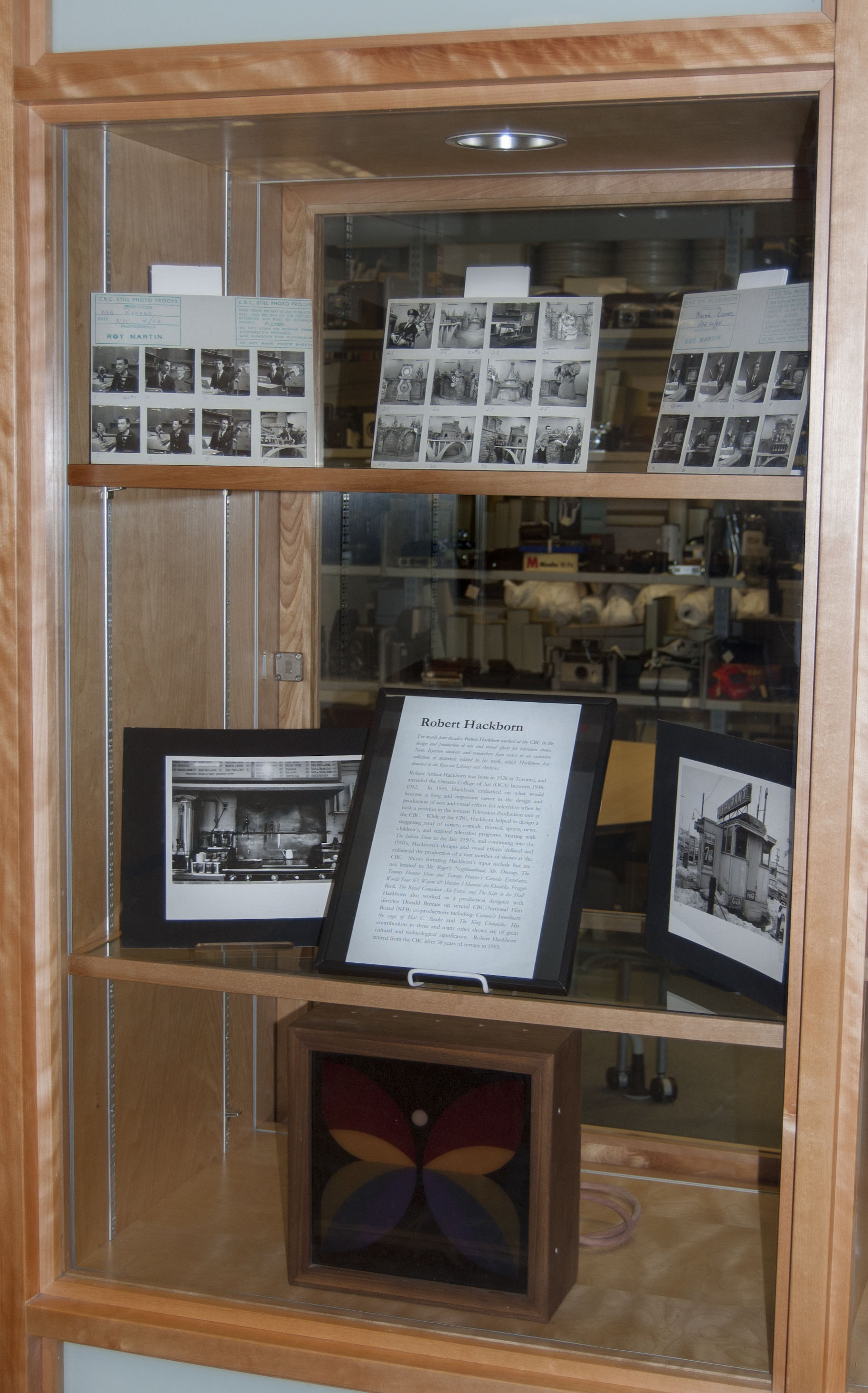
During his career, Mr. Hackborn was also responsible for the execution of a very large collection of photographs that document the processes of working on a television set. With a professionally trained eye for composition and his camera, Mr. Hackborn systematically documented the television production process of the shows that he worked on. Featured in some of these photographs are Jim Henson and Fred Rogers.
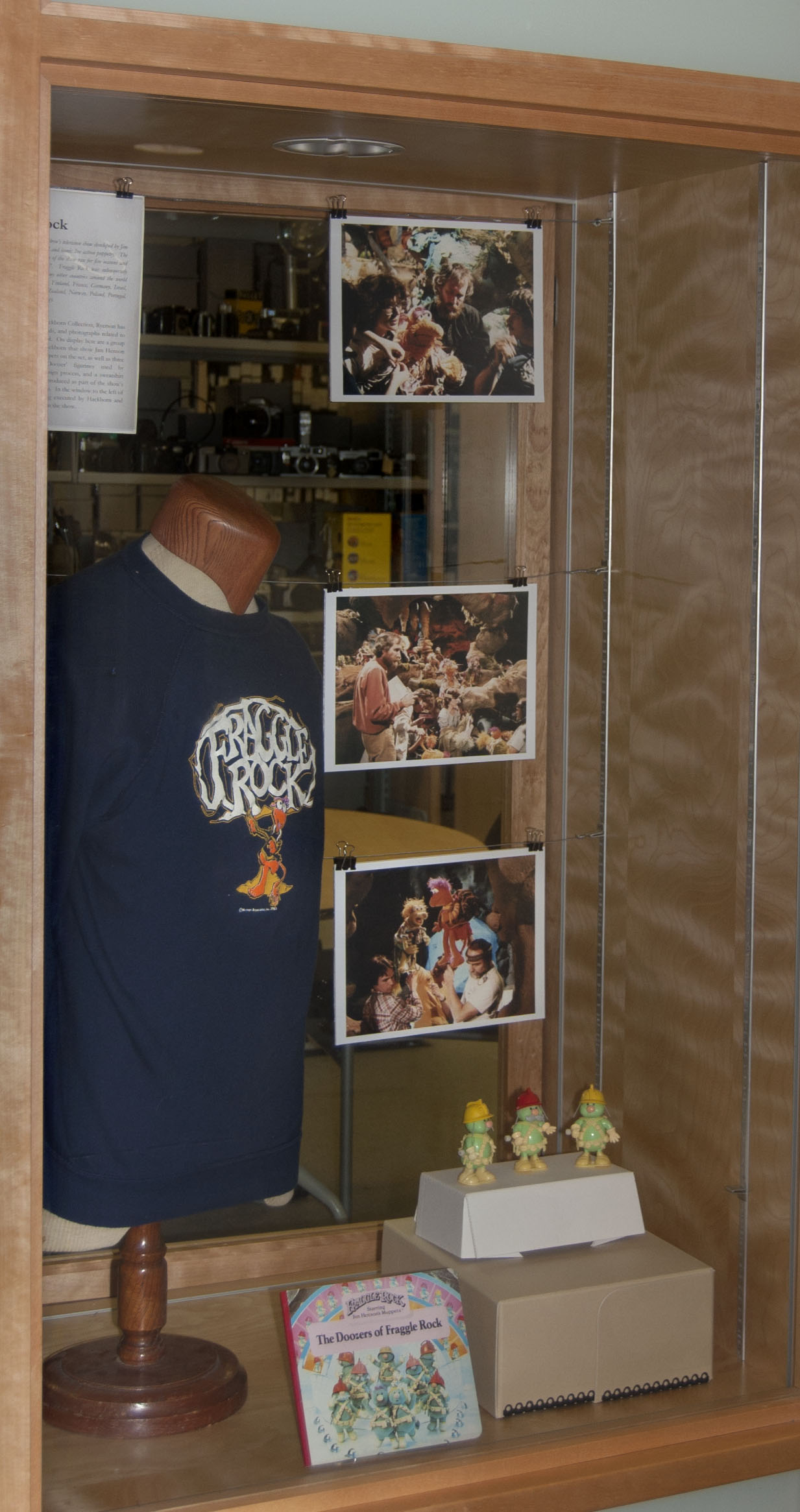
Fraggle Rock
As part of the Robert Hackborn Collection, Ryerson has several objects, textual records, and photographs related to the production of Fraggle Rock. Fraggle Rock was a popular children’s television show developed by Jim Henson and featuring his beloved live action puppets. The original English language version of the show ran for five seasons and 96 episodes between 1983 and 1987. On display are a group of photographs taken by Hackborn that show Jim Henson and others working with puppets on the set of Fraggle Rock, a sweatshirt and a children’s picture book produced as part of the show’s promotional marketing campaign, and three specially commissioned ‘Doozer’ figurines used by Hackborn during the set design process.

Hackborn is credited with the art direction for Fraggle Rock during the inaugural 1983-84 season, and as a set designer for two episodes in the second season.
The Glass Matte Shot
During his career at the CBC, Hackborn worked to pioneer various special visual effects techniques for television production including the “Glass Matte Shot”. To achieve this effect, images were painted onto a transparent glass matte placed in the foreground of and realistically inserted into the “real world” shot. This type of special effect was typically used to add facades onto buildings, or to create historically accurate ‘period’ effects for shows set in earlier times. The CBC film drama I Married the Klondike, and several sketches from The Royal Canadian Air Farce feature great examples of how the glass matte technique was used. The “Glass Matte Shot” process relied on a strong proficiency in lens-angle mathematics and a mature artistic vision in order to generate a realistic perspective and convincing effect. Shooting techniques like these were an important cost-saving tool on many CBC productions.
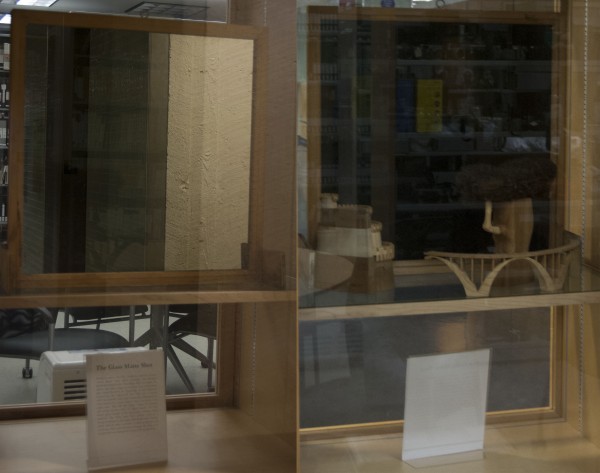
Robert Hackborn retired from the CBC in 1993 after 38 years of service. Included in the collection here at the Ryerson Special Collections are photographic and textual documentation of the various film-based special effects pioneered and employed by Hackborn in his work, as well as documentation of the earliest show development process for the major children’s television programs Mr. Dressup and Mr. Rogers’ Neighbourhood. There are also records related to the creative processes behind Jim Henson’s Fraggle Rock, including images of, and correspondence with Henson.
The Robert Hackborn collection represents a valuable resource for students and academics studying the history of Canadian television production and cultural output.
If you would like to see this display and part of the collection, or for more information, please drop by the 4th floor of the library, or make an appointment: asc@ryerson.ca. You can search our Robert Hackborn Fonds online here.
The Hackborn collection has also been profiled in the summer 2013 edition of the Toronto Metropolitan University Magazine. “http://www.nxtbook.com/dawson/ryerson/alumni_2013summer/#/32.



